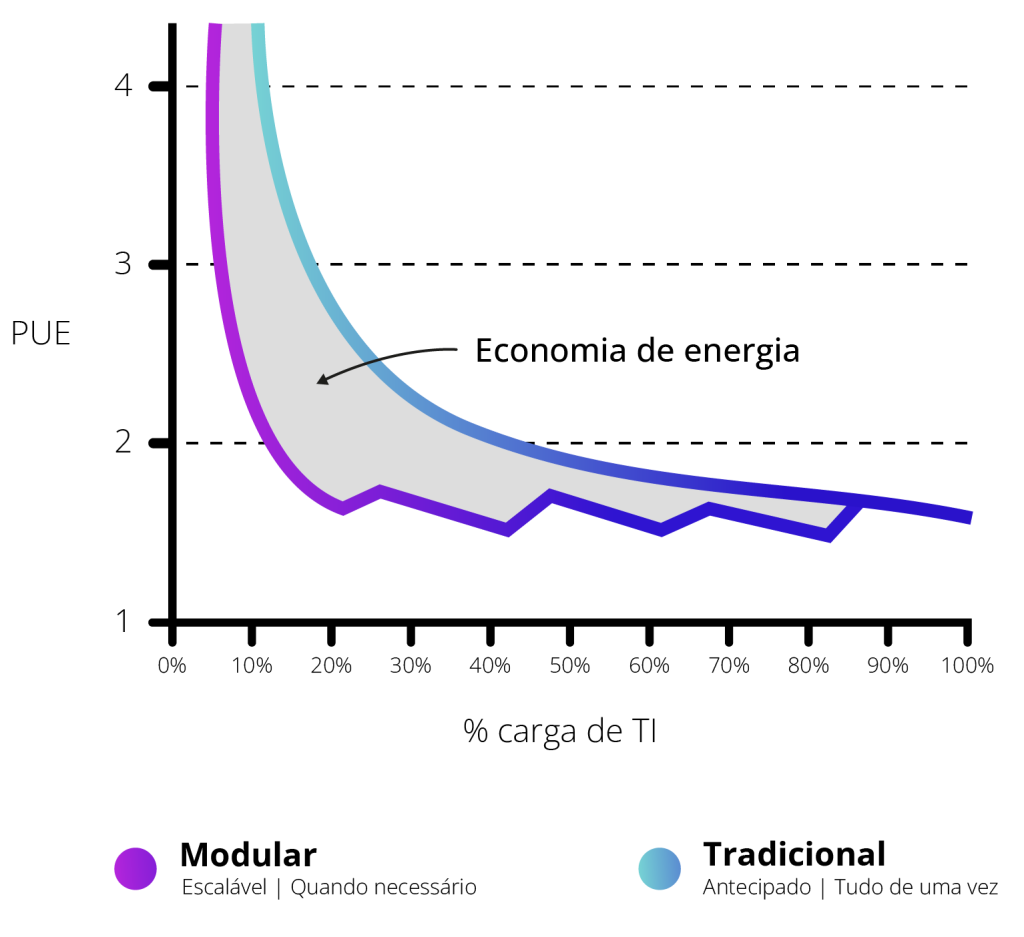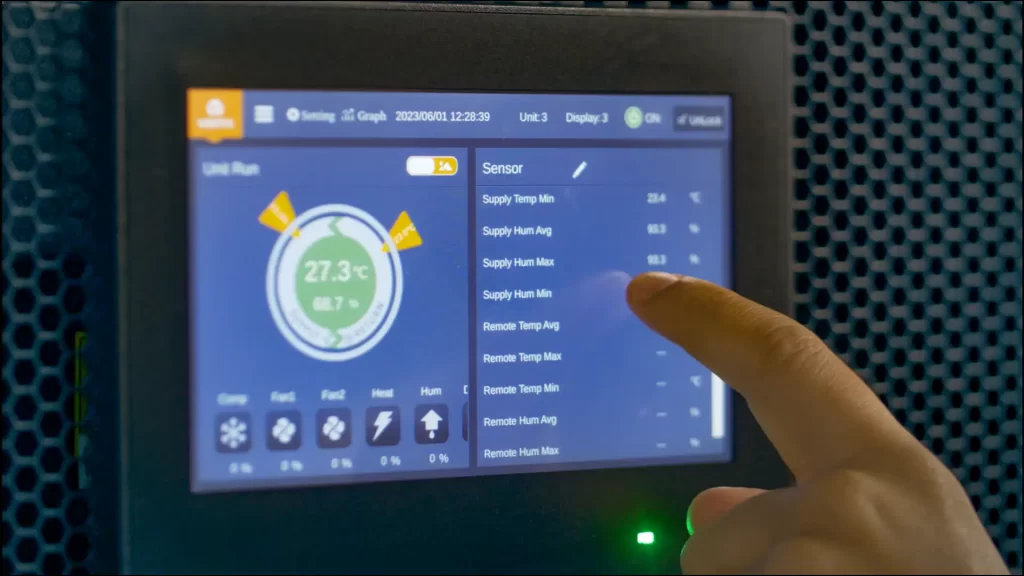What Is a Green Data Center
A green data center, also known as a sustainable data center, is a facility that uses advanced energy-efficient technologies to minimize its environmental impact. Typically, green data centers reuse the heat generated by their systems, rely on renewable energy sources, and implement practices to reduce waste, optimizing energy use, lowering operational costs, and promoting a more durable infrastructure.
Check Out the Key Aspects That Make Modular Data Centers a Sustainable Solution:
1. Scalability to Optimize Resources
Modular data centers are built in scalable blocks, allowing the infrastructure to be sized according to business needs. This feature prevents over-provisioning, meaning the excessive allocation of space, equipment, and energy that often occurs in traditional models. Additionally, this flexibility simplifies future expansions, reducing the use of unnecessary materials and energy.
Unlike conventional structures, which typically require large initial investments and high-scale construction to support uncertain future demands, modular models enable gradual and planned expansion. This means companies can deploy only the resources they need at that moment, avoiding over-provisioning and significantly reducing energy consumption, deployment costs, and material usage.
In summary, the scalability of modular data centers goes beyond operational benefits. It is a strategic sustainability tool. By enabling smarter and more controlled use of resources, it prevents excess and makes each stage of growth more efficient, cost-effective, and environmentally responsible.


